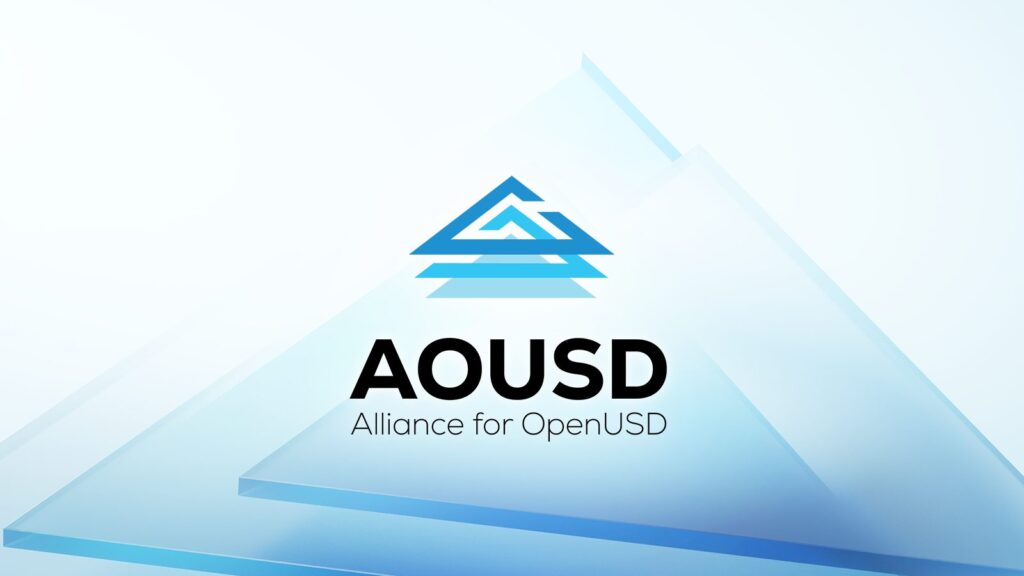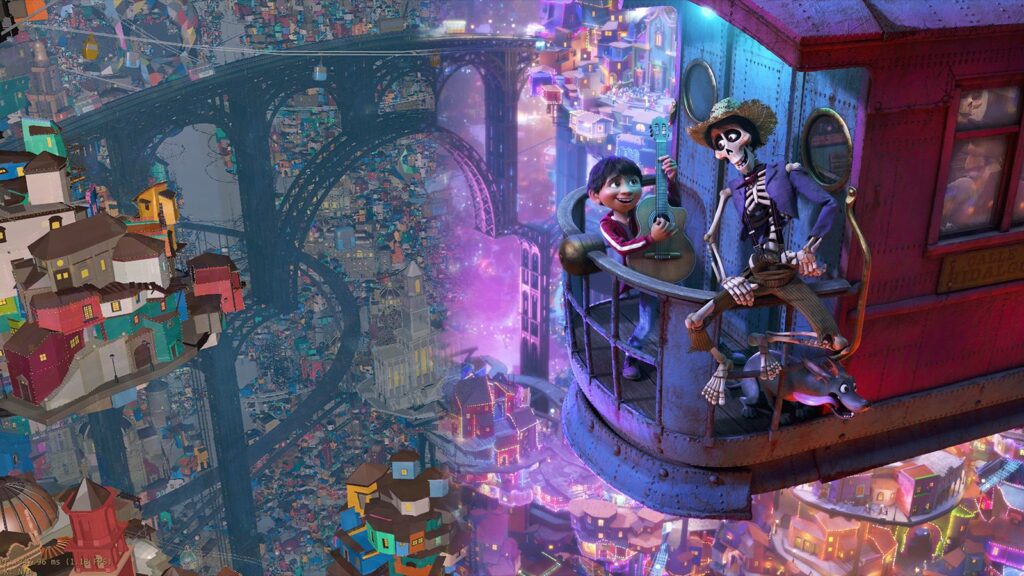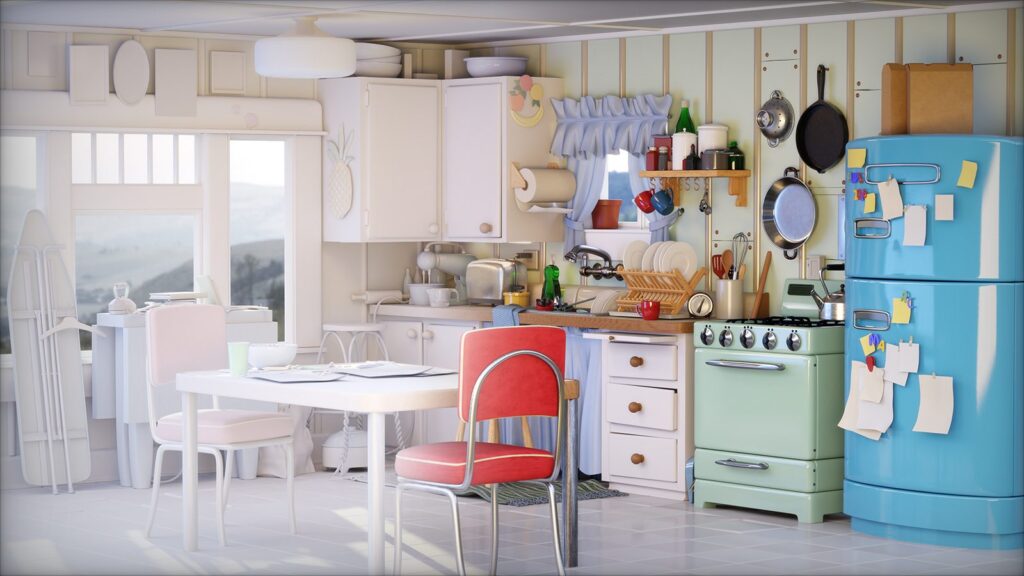
At SIGGRAPH 2023, an Autodesk Vision Series panel explored Universal Scene Description (OpenUSD) and how it fosters open data exchange across the visual effects industry. The panelists, all members of the recently formed Alliance for OpenUSD (AOUSD), discussed how the technology opens the door for seamless connectivity across departments, studios, vendors and devices, helping drive development of 3D worlds.
Autodesk’s Eric Bourque moderated the discussion and shared perspectives alongside Pixar’s David Ryu, NVIDIA’s Rev Lebaredian, and Adobe’s Guido Quaroni.
The AOUSD was formed in August 2023 by Pixar, Adobe, Apple, Autodesk, and NVIDIA, together with the Joint Development Foundation (JDF), an affiliate of the Linux Foundation. Its charter is to promote the standardization, development, evolution, and growth of Pixar’s Universal Scene Description technology. Cesium, Epic Games, Foundry, Ikea, SideFX and Unity have also joined the AOUSD.
Origin story: A unified data model across the Pixar pipeline
Quaroni, arguably the creator of USD, shared insight into the technology’s beginnings at Pixar, where he worked for two decades before joining Adobe in 2021. To manage large data sets and complicated shots that had to go through the entire studio pipeline, the studio used both a proprietary format and the Alembic open caching format.
“We realized that if we kept things internal and there was an open-source equivalent out there, even if we have something more advanced, we may eventually have to drop ours, and take on what’s becoming more widespread, because we also use third-party software,” he said
Pixar opted to develop the technology as open-source from the ground up, and began showing it to studios in 2013. “We realized a lot of studios were trying to solve similar problems, to keep high-level data all the way to the end.”
Pixar’s Ryu shared his experience working on Finding Dory, the first feature production to deploy USD. “Prior to the introduction of USD we had a spider web of formats. There wasn’t any high-level thinking about standards between them. So, this problem of asset exchange across facilities — even internally to one facility — is super hard, and USD has made that a ton simpler.”
The panelists noted that the core simplification USD delivers is driving fast adoption. Said Ryu, “People are hungry for a solution, and some of those fundamental technological concepts in USD, the layering, composition, inheritance, they’re there because over many years of Pixar, they’ve grown in response to pipeline needs.” He added, “Because of partnerships with folks like Autodesk, SideFX, NVIDIA, and Adobe, there’s a momentum and a community around it. So, if you’re going to bet on a horse, to simplify your world, it’s a good answer.”
Autodesk’s Bourque noted, “The technology is very principled in the way it’s thought out. The implementation is super high performance, and that made it really easy for people to realize that’s the thing to go after.”
But like the real world, constructing virtual worlds is done by many different craftsmen from different domains, with different expertise, using different tools. “The first problem was, how do we gather all this stuff together into one coherent format?”
Expanding for world-building and yet-to-be discovered applications

©Disney/Pixar
NVIDIA’s Lebaredian came to USD technology to solve the same problem in a different context, training AI. “Back around 2012 when we started our AI journey, we realized that we needed some method of constructing virtual worlds that we could feed to our simulators; a sandbox for our AIs to learn.”
Finding USD promising, but not yet covering all of the tools they needed, Lebaredian said, “We asked ourselves ‘What does the future look like? How many of these tools and domains will be connected?’ and we worked backwards from there, connecting tools and working with Pixar and anyone else interested in adding layers to it.”
Quaroni spoke to the reality that researchers building new technology typically have to re-do everything from scratch when it comes time to integrate it into a product. USD has changed that at Adobe. “One day a researcher said to me, ‘Hey, look at this. I’m actually implementing a NeRF in USD through Hydra, and I got it into your viewer, so if you’re interested, check it out.’”
The panelists shared some areas in the spotlight for the AOUSD, which include NeRF, behaviors, adding physics properties, and Hydra rendering through USD. They are looking to implement working groups for all of the key areas of development. Said Larabedian, “We want to start these instead of continuing to have sidebar conversations.”
Testing research in a real-world context can happen much earlier with USD. It also simplifies processes to accelerate ideas, research, and innovation. Said Ryu, “I love it when I hear from an artist that they’ve done a thing that I didn’t plan for, and wasn’t a feature request that we had to code for. There’s a tremendous amount of artist freedom, and that’s what I’m excited about.”
Where can the technology go?

For NVIDIA, Lebaredian sees USD as the foundation of the future of computer graphics, simulation and AI — particularly for NVIDIA Omniverse. “In 10 years, I think every single 3D tool out there will be using USD, in the same way we just take for granted that every web browser or web thing uses HTML.”
For Adobe and Autodesk, the promise of USD is all about interoperability, and putting the artist forward by taking away the need for them to re-do work that doesn’t map between applications. Said Quaroni, “The problem is pretty much solved on images, but that is not the case with 3D. We want to make it so artists can move around seamlessly.”
Bourque echoed the importance of portability, not only within the Autodesk family of products, but between creative applications from many providers. “One of the key tenets of Autodesk Flow, our media and entertainment industry cloud, is that it needs to be open. We want to ensure studios always have access to their data and they can choose the best tool for any part of their workflow. To do that we’re building Flow around open standards like OpenUSD.”
There is a concerted effort to stay on top of the fast development happening in 3D. “We want to make sure that OpenUSD doesn’t become one of those standards that by the time something is implemented, the standard is obsolete,” said Quaroni. “We are aggressively trying to bring things in so people can start using it, and have a good versioning and upgrade mechanism in place to stay current.”
The move toward standardization
Whether it’s an artist, a creative company, or a technology developer, the driving force behind the AOUSD is standardization. “They want all of us to figure our stuff out, so that it’s even more frictionless, and the barriers are out of the way. And that’s hard. Hopefully, this is an entity that helps us get there,” said Ryu.
Currently, there is no standard that describes USD. It’s just code. If anyone wants to conform to the standard, they have to go run it against a version of the OpenUSD library. To build a standard, the AOUSD will define the core of USD and the shells around that core.
Said Bourque, “We are focusing on that foundation first. We intend to get that solid, well-documented, and well-specified, because it’s on top of that that we will build all of the amazing extensions and extras that are coming up in the future.”
Learn more about AOUSD at: https://aousd.org/

Curious about how open standards are revolutionizing the industry? Get valuable insights on emerging technology and make connections with industry experts at AU 2023. Get a free Digital Pass today.